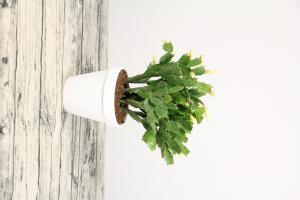How to Cut Back a Rubber Tree Plant
Rubber tree plants can make great houseplants due to their attractive foliage and air-purifying abilities. However, they can grow quite quickly and become unmanageable if left unchecked. If your rubber tree plant has become too large for its pot or is taking up too much space, it may be time to cut it back. In this article, we’ll outline the steps for successfully pruning your rubber tree plant.
Step 1: Choose the Right Time
The best time to prune a rubber tree plant is in the spring or early summer, as this is when the plant is actively growing. Avoid pruning in the fall or winter, as the plant may be entering a dormant phase and may not heal as quickly from pruning wounds.
Step 2: Gather Your Tools
To prune your rubber tree plant, you will need a sharp pair of pruning shears or scissors. It’s also a good idea to have rubbing alcohol or another disinfectant on hand to clean your tools between cuts. This will help prevent the spread of disease or pests.
Step 3: Decide on Your Pruning Goals
Before you begin cutting back your rubber tree plant, think about what you want to achieve. Are you trying to control the size or shape of the plant? Are there damaged or diseased branches that need to be removed? Knowing your goals ahead of time will help you make informed pruning decisions.
Step 4: Prune Judiciously
When pruning your rubber tree plant, it’s important to be selective. Do not remove more than one-third of the plant’s total foliage at once, as this can stress the plant and delay its recovery. Instead, focus on removing dead or diseased branches, as well as any branches that are growing in undesirable directions. You can also trim back any branches that are too long, using clean, angled cuts just above a leaf node.
Step 5: Reduce Stress After Pruning
After pruning your rubber tree plant, it’s important to give it time to recover. Make sure the plant is well-watered and placed in a bright, but not direct, light. Avoid fertilizing the plant for at least a month, as this can further stress it out. With proper care, your rubber tree plant will soon bounce back and begin to grow anew.
Conclusion
Cutting back a rubber tree plant may seem daunting, but with the right tools and techniques, it can be a quick and easy process. By selectively pruning damaged or diseased branches and controlling the size and shape of the plant, you can keep your rubber tree healthy and beautiful for years to come.

 how many times do yo...
how many times do yo... how many planted tre...
how many planted tre... how many pine trees ...
how many pine trees ... how many pecan trees...
how many pecan trees... how many plants comp...
how many plants comp... how many plants can ...
how many plants can ... how many plants and ...
how many plants and ... how many pepper plan...
how many pepper plan...






























